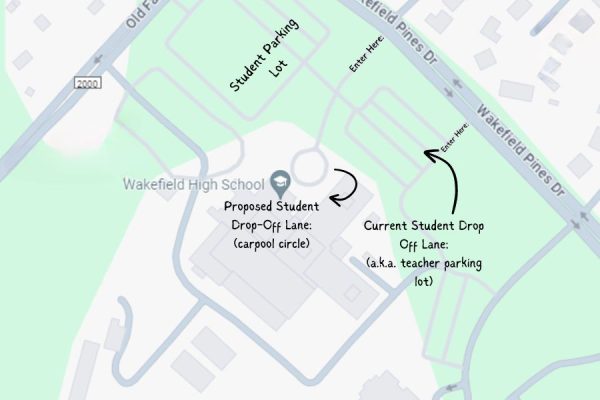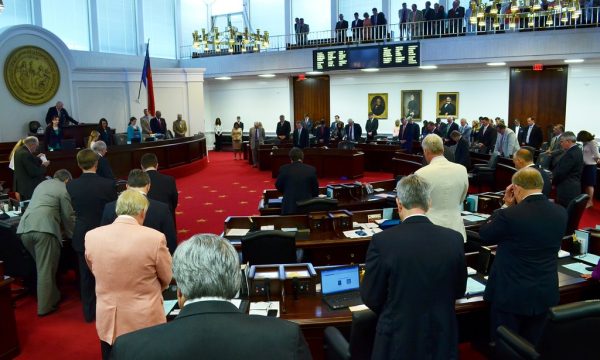Classroom size: is study hall a solution to improve student performance?
Many wince when a broken record scrapes across its player, repeatedly. Time and time again, from court cases to media coverage the discussion of class sizes is forever relevant. Though when concerning the impact of overwhelming class sizes, this vinyl will rightfully never cease.
The pain slithered from my open palm down my outstretched arm, aching along the length. A sigh poured from my mouth as my question continued to go unanswered. My teacher zoomed from student to student, trying to assist with mathematics. As I tried to gain some help, the dismissal bell mocked my efforts. “Just come during Pride Time,” she said, quickly to ensure no tardiness for my next class. Pride Time was just as hectic with the classroom drowning in students.
If it’s paper copy limitations or the cancellation of activities due to class numbers, the duty of our educators is further challenged. My viewpoint as a student restricts me from personally understanding the struggles of managing class sizes from an instructor’s perspective. However, what influences me is teacher-help inside these class sizes. That is the reason something as simple as proposing the solution of study hall comes into play because of my inability to consider whatever else.
However, what influences me is teacher-help inside these class sizes. That is the reason something as simple as proposing the solution of study hall comes into play because of my inability to consider whatever else.
“Reducing class size to increase student achievement is an approach that has been tried, debated, and analyzed for several decades.” said the Center for Public Education. There’s incredible mindfulness that something should be established on the grounds that this is such a bothersome issue, for students and teachers alike.
A national survey of 50,000 Americans illustrated that the reduction of class sizes was the most efficient method for school reformation. Statistics obtained about class sizes comes from an experiment called Project STAR/the Tennessee Study. From 1985 to 1989 Tennessee students from grades Kindergarten to Third were randomly appointed to three class-size categories. The three class sizes were as follows: 13–17 students (taught by one teacher), 22–25 students, and over 25 students (taught by a teacher and a teacher’s aide).
The random selection of the experiment helped to maintain control over the research process; which enabled the comparison of students who had four years of small class participation to students who had none. The project concluded that students in smaller classes did better than those in larger classes throughout the K-3 grades. Minority, and inner-city children, productivity was better in smaller classes. An average student assigned to the smallest classes had a reading score of nearly eight percent higher than students in the medium-sized classes. The smaller-class students, on average, achieved math scores nine percent higher.
The class size notion agitates many variables such as classroom and teacher quantity. Although, one of the effects of class sizes is its time disadvantage to students. With this in mind, the installment of a study hall sounds most appealing. Now, I know what you’re thinking: Pride Time already provides opportunities for students to study and make-up work. Pride Time is 30 minutes, which I’ve found isn’t a considerable amount of time. Consequently, some teachers request students to come to Pride Time even if it is not their designated class period.
Results have demonstrated that students enlisted in a study hall period are more effective in their studying, regardless of whether it is a direct result of their capacity to complete work. It seems worthy for students to take a break in the day, on the off chance that it will help them to remain centered for their afternoon classes.
Logically, the success of study halls depend on how they are conducted. If you have ever endured high school, or seen imitations of it in movies, you could only imagine the amusement that comes with the addition of a “free” period.
A school in D.C. incorporated a strategic method. To start, the principal guaranteed that students had an assigned space for study halls. This helped diminish instances of straying students who were pestering other learning environments. Students were basically requested to take an interest in more important work. Some were questioned about ways they could enhance their study halls. The students’ opinions were valued so much, that demands to distribute articles on the school’s website started to emerge. This prompted an influx of efficiency among students and even the start of a school paper. The school was considerably happier with the results.
How I’ve been attempting to tame the teacher-help issue is through Wakefield’s helpful faculty resources. During Pride Time, in the commons, there are teachers available to educate on certain subjects. Similarly, honor clubs grant teacher-help volunteer opportunities for students to help other students.
With all of the responsibilities that consume a high school student’s life like jobs and extracurriculars, study halls could comfort this. If a timely study hall is provided during lunch or worked into the school’s schedule, it would give both students and teachers a sigh of relief.














